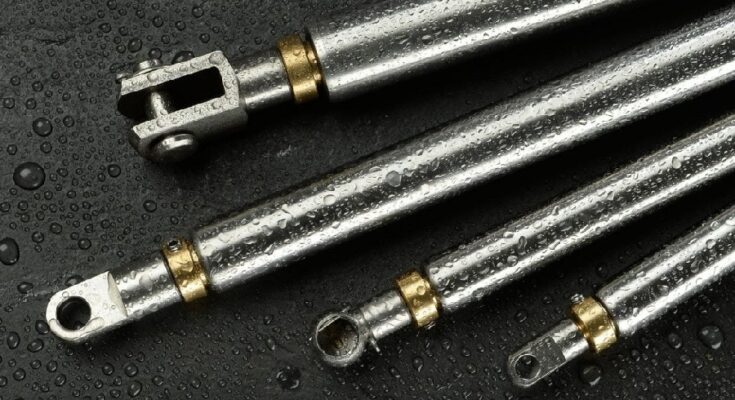Have you ever struggled to lift a heavy object, only to strain your back or drop the item? If so, you can consider using steel gas struts to make lifting tasks more accessible and safer. These simple yet powerful devices use compressed gas to provide reliable support and controlled motion for various applications, from lifting car hoods to opening cabinet doors. But with so many different types available, how do you choose the right ones for your needs? In this article, you can go through selecting the best one for your application so that you can lift them confidently and efficiently.
Load capacity: The maximum weight the steel strut can support without failure is the load capacity. Before choosing, it’s essential to consider the weight of the object or objects they will support. If the load capacity is not sufficient for the weight of the object, it might fail, leading to safety hazards or damage to the object. It’s also important to consider any additional weight that may be added to the object over time, such as accessories or modifications. Select one with a load capacity that exceeds the object’s weight by a comfortable margin.
Stroke length: The stroke length of a gas strut is the distance it can extend or compress from its fully retracted to a fully extended position. Before selecting, choosing a stroke length that matches the application’s requirements is crucial. A strut with a stroke length that is too short will not provide enough extension, while one with a stroke length that is too long may interfere with other components or become unstable. Be sure to measure the distance it will need to extend and select one with a stroke length that matches or exceeds that distance.
End fittings: The end fittings are the components that attach the strut to the object and the mounting point. Different end fittings, including ball sockets, eyelets, clevises, and brackets, are available. When selecting end fittings, it’s essential to consider the application’s requirements, such as the orientation and position of the mounting points and the available space. Additionally, it’s crucial to select those compatible with the strut and the supported object.
Operating temperature: Operating temperature is the range of temperatures within which it can function reliably. These are typically designed to operate within a specific temperature range, and it’s essential to select gas struts suitable for the application’s operating environment. Extreme temperatures can affect their performance, causing them to fail or function poorly. Consider the temperature range in which they will be used and select one designed for those conditions.
Damping characteristics: Damping is the resistance to the motion they provide as they extend or compress. They can be designed with different damping characteristics, such as soft, medium, or firm. Before selecting, it’s essential to consider the application’s requirements for damping. A soft-damping one may suit applications requiring gentle motion, such as furniture or medical equipment. A firm-damping strut may suit applications requiring more controlled motion, such as heavy machinery or automotive applications.
Corrosion resistance: Corrosion is a common issue with metal components, especially in environments with high humidity or exposure to saltwater. Before selecting, it’s essential to consider the application’s requirements. Stainless steel gas struts are an excellent choice for applications with critical corrosion resistance, such as marine or outdoor environments.
Conclusion
Selecting the proper steel gas struts for your application can be challenging. Still, you can choose the best one for your needs by considering load capacity, stroke length, end fittings, operating temperature, damping characteristics, and corrosion resistance. Selecting them from reputable manufacturers with a proven track record of producing high-quality products is also essential. Before shopping, compare prices and features from multiple suppliers to find the best value for your budget.




